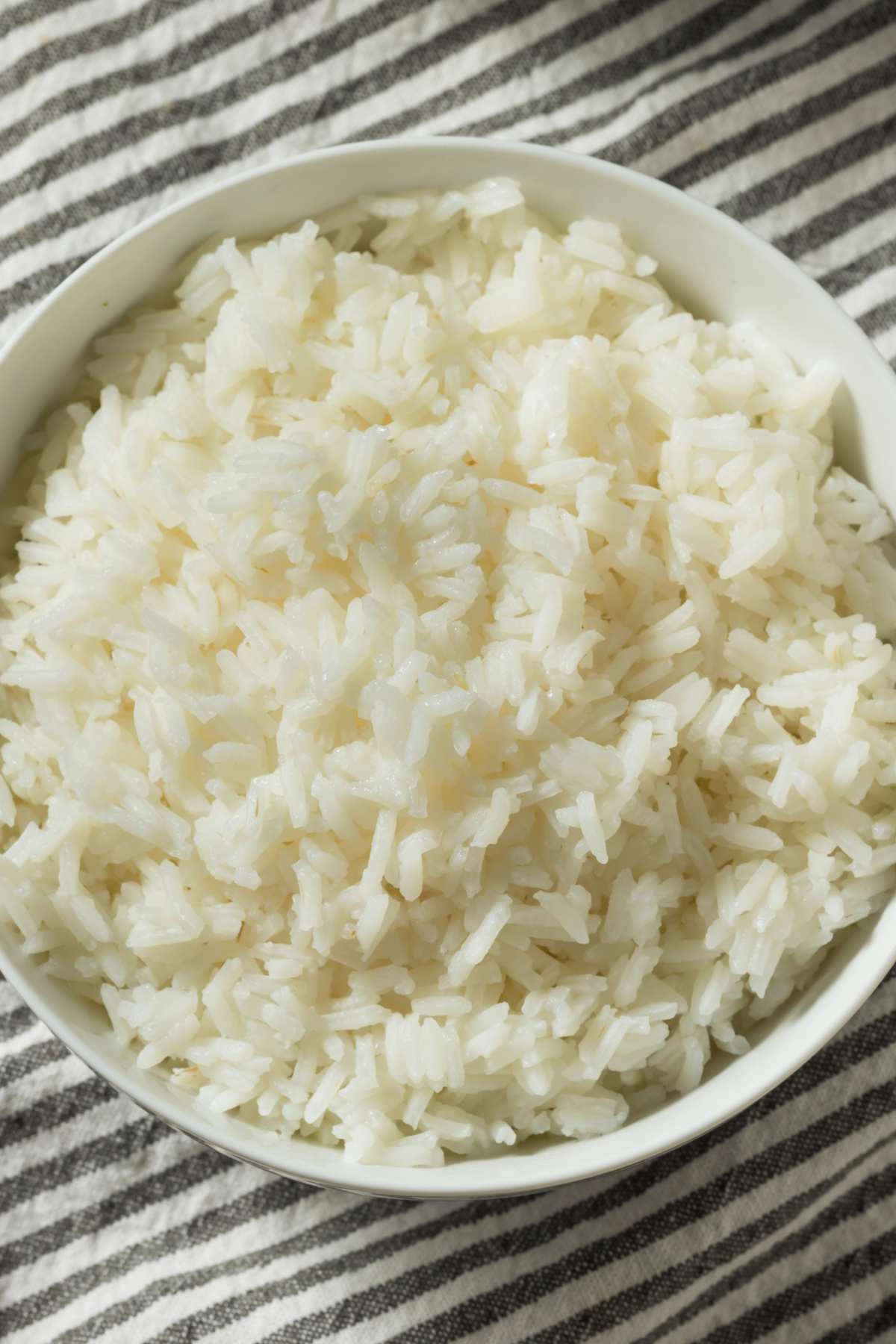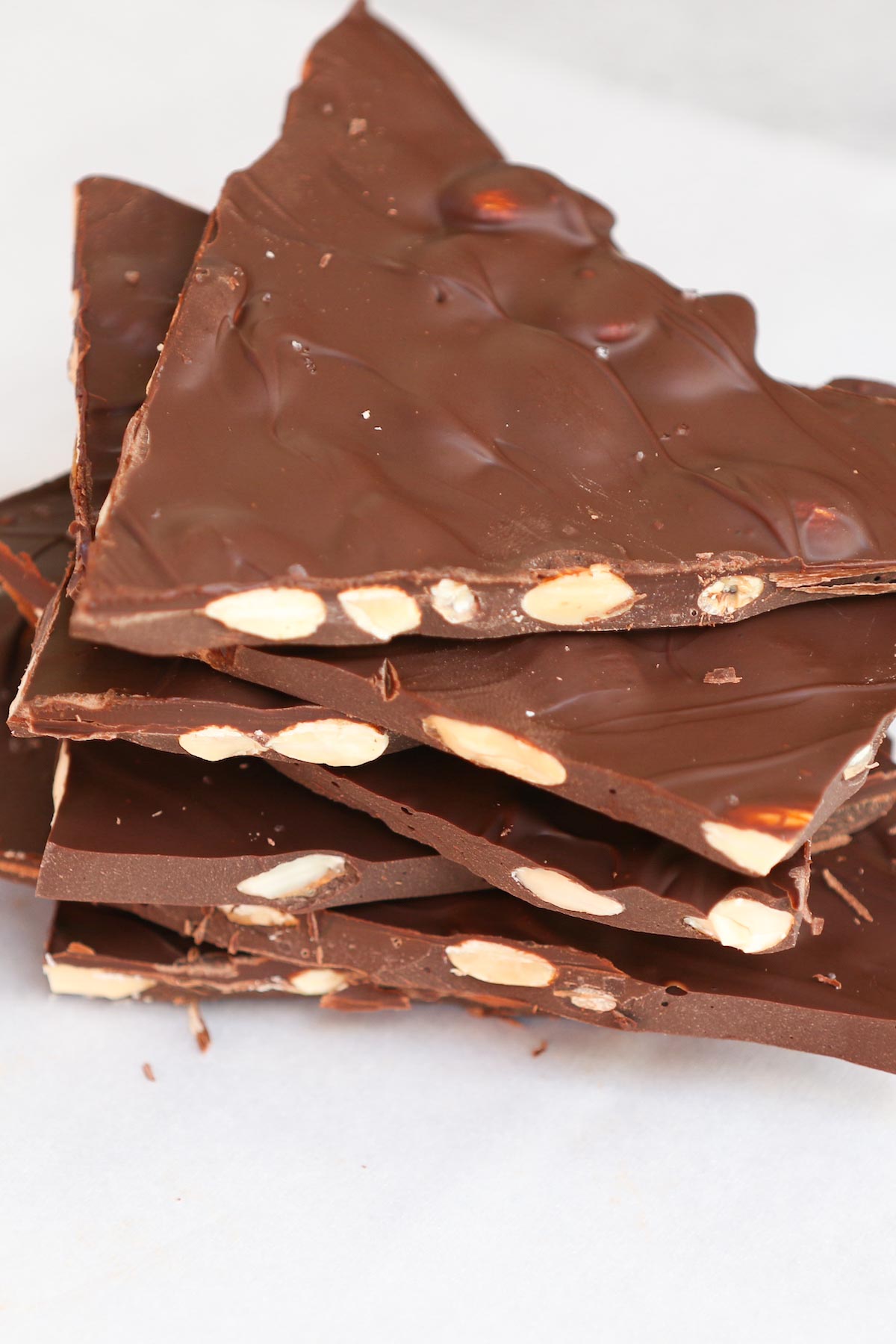Is White Rice Keto and Carbs in White Rice (+ Keto White Rice Substitutes)
on Apr 12, 2023
This post may contain affiliate links. Please read my disclosure policy.
Is white rice keto-friend? How many carbs and net carbs are in white rice? People following the keto diet may wonder if white rice is a suitable food to eat.
In this post, we will explore the nutritional profile of white rice and whether it is keto-friendly. We will also look at some keto white rice substitutes.

What Is White Rice?
White rice is a staple food for many cultures around the world, and it is a popular source of carbohydrates.
White rice is a type of rice that has been processed to remove the bran and germ, leaving only the starchy endosperm. This process results in a white, polished grain that cooks quickly and has a mild flavor.
Is White Rice Keto-Friendly?
Since white rice is a high-carb food, it is not keto-friendly. The ketogenic diet is a low-carb, high-fat diet that aims to induce a state of ketosis in the body. In ketosis, the body burns fat for energy instead of glucose.
However, that doesn’t mean you can’t eat it at all on a keto diet. You can still eat white rice in small amounts and factor it into your daily carb allowance.
How Many Carbs In White Rice?
According to USDA, 1-cup serving of cooked white rice (about 158g) contains approximately 44.2 grams of carbs. That’s a significant amount of carbs, especially for someone following a keto diet, where the daily carb intake is limited to around 20-50 grams per day.
How Many Net Carbs In White Rice?
The net carbs in white rice are calculated by subtracting the fiber content from the total carbs. A 1-cup serving of cooked white rice contains 0.6 grams of fiber, which means it has about 43.6 grams of net carbs.
This amount of net carbs can easily put you over your daily carb limit on a keto diet.
Types Of Rice
There are many types of rice available, including white rice, brown rice, basmati rice, jasmine rice, and wild rice. While white rice is the most commonly consumed type of rice, it is not the healthiest.
Brown Rice Vs. White Rice
Brown rice is a whole grain that contains bran and germ, which are rich in fiber, vitamins, and minerals. In contrast, white rice has been stripped of these nutritious components, leaving only the starchy endosperm. Therefore, brown rice is a better choice than white rice for overall health.

Health Benefits Of White Rice
While white rice is not the healthiest choice of grain, it does offer some health benefits. It is low in fat and sodium, and it is a good source of thiamin, niacin, and folate.
Risks And Side Effects
Eating too much white rice can lead to several health risks, such as weight gain, type 2 diabetes, and heart disease. It is also a high-glycemic-index food, which means it can cause a rapid spike in blood sugar levels.
How To Make White Rice Healthier
If you want to include white rice in your diet, there are some ways to make it healthier:
- You can cook it with broth instead of water to add more flavor and nutrients.
- You can also mix it with other grains, such as quinoa or barley, to increase its fiber and protein content.
Carbs Of White Rice Compared To Other Grains
White rice is high in carbs and low in fiber compared to other grains. Here is a comparison of cooked white rice, brown rice and quinoa based on USDA nutrient database.
| 100-gram Serving | Carbs | Fiber | Fat |
| White Rice | 28 grams | 0.4 grams | 0.3 grams |
| Brown Rice | 25.4 grams | 1.6 grams | 0.9 grams |
| Quinoa | 21.3 grams | 2.8 grams | 1.9 grams |
Best Keto White Rice Substitutes
If you are looking for a low-carb alternative to white rice, there are several keto-friendly options available. Here are some of the best substitutes for white rice on a keto diet:
- Cauliflower Rice – Cauliflower rice is a low-carb, nutrient-rich alternative to white rice. One cup of cauliflower rice contains only 4 grams of carbs and 2 grams of fiber.
- Shirataki Rice – Made from the konjac yam, shirataki rice is a low-carb, calorie-free rice substitute. One cup of shirataki rice contains only 3 grams of carbs and 2 grams of fiber depending on the brand.
- Broccoli Rice – Similar to cauliflower rice, broccoli rice is made by pulsing broccoli florets in a food processor. One cup of broccoli rice contains only 6 grams of carbs and 3 grams of fiber.
White Rice Nutrition (Macros)
Let’s take a closer look at the nutrition facts of white rice to understand its macros:
- Carbs – One cup of cooked white rice contains nearly 45 grams of carbs, which is high compared to other grains. For this reason, white rice is not considered a keto-friendly option.
- Fats – White rice is very low in fat, with only 0.3 grams of fat per cup.
- Protein – One cup of cooked white rice contains 4.2 grams of protein.
- Calories – One cup of cooked white rice contains about 204 calories.
Should I Eat White Rice?
If you enjoy eating white rice, it is best to consume it in small portions and pair it with fiber-rich foods like vegetables to slow down its absorption and prevent blood sugar spikes.

FAQ
How Many Net Carbs Are In A Cup Of Cooked White Rice?
One cup of cooked white rice contains about 44.2 grams of carbs and 0.6 grams of fiber, which translates to 43.6 grams of net carbs per USDA.
What Is The Glycemic Index Of White Rice?
The glycemic index of white rice varies depending on the type and cooking method, but it is generally considered high, ranging from 70 to 89.
Is White Rice High In Carbs?
Yes, white rice is high in carbs. One cup of cooked white rice contains nearly 45 grams of carbs. However, not all carbs are created equal, and the glycemic index of white rice is relatively high, meaning it can cause a rapid spike in blood sugar levels.
Can You Eat White Rice On A Low-Carb Diet?
No. White rice is not a low-carb food and would not typically be included in a low-carb diet. However, if you are following a more flexible low-carb diet, you may be able to incorporate small amounts of white rice into your meals.
How Many Calories Are In A Cup Of Cooked White Rice?
One cup of cooked white rice contains approximately 204 calories. This calorie count can vary slightly depending on the brand and cooking method used.
Does White Rice Have More Carbs Than Brown Rice?
Yes, white rice has more carbs than brown rice. One cup of cooked brown rice contains approximately 44.2 grams of carbs, similar to white rice. However, brown rice also contains more fiber and nutrients, making it a healthier option overall.
How Much Fiber Is In White Rice?
White rice is not a significant source of fiber. One cup of cooked white rice contains only less than 1 gram of fiber. In comparison, one cup of cooked brown rice contains approximately 3.1 grams of fiber.
Is White Rice Bad For Weight Loss?
White rice is not inherently bad for weight loss, but it is high in carbs and low in fiber and nutrients. As such, it may not be the most filling or nutritious food choice. If you are trying to lose weight, it may be better to opt for more nutrient-dense foods, such as vegetables, whole grains, and lean protein sources.
Conclusion
In conclusion, white rice is a high-carb food that may not be suitable for low-carb diets. However, it can still be enjoyed in moderation as part of a balanced diet. If you are concerned about your carb intake, consider choosing brown rice or other nutrient-dense whole grains instead.
As with any food, it is important to consider the overall nutritional value and portion sizes when including white rice in your meals.
You May Also Like

Carbs in White Rice and How to Cook White Rice
Ingredients
- 2 cups white rice, jasmine rice or basmati rice
- 3 cups water, or broth
Instructions
- Add rice to a microwave-safe bowl or microwave rice cooker. Pour in enough water to cover easily.
- Swish the rice around with your fingertips and drain the water through a sieve. Repeat 2-3 times until the water is mostly clear.
- Add the correct amount of water for cooking and cover.
- Microwave at 100% or High Power for 10 minutes.
- When the cycle is complete, microwave at 50% or Medium Power for 2 more minutes.
- Remove the rice from the microwave and let it rest covered and undisturbed for 3 minutes.
- Fluff with a fork and serve.
Nutrition
Nutrition information provided is an estimate only and will vary based on ingredient brands and cooking methods used.



